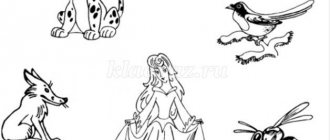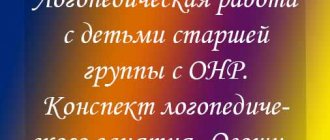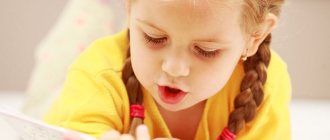Children have various problems with many letters in the process of speech formation. One of the most common difficulties is setting the sh sound. Typically, children find it difficult to pronounce hissing sounds for the reason that they cannot relax the tongue and position it in the required shape, which is required by the correct articulation of the sound sh.
Causes
The main reason that a child cannot speak hissing sounds correctly is the way the parents communicate with the baby. Many adults deliberately copy the speech of a child, speaking to him in a childish way. Thus, the child hears the incorrect pronunciation and gets used to precisely this manner of producing the sound sh. That is why experts strongly recommend that parents speak to their children correctly.
In addition to the parental desire to imitate baby babble, some structural features of the articulatory apparatus play an important role in the production of the sound sh, which include the following points:
- tongue movement is limited due to the shortened hyoid ligament;
- articulation is affected by the size of the lips (too thin or full) and the size of the tongue (too large or small);
- dental anomalies;
- disruption of the auditory canal.
In most cases, a violation of the production of the sound w can be quite easily corrected at home with regular and careful work with the child. In some cases, children who have problems pronouncing hissing words will be helped by a speech therapist.
Consolidating pronunciation
The speech therapist not only plays the sound, but also automates it. For preschoolers, lessons are structured in an interesting playful way. Approximate plan for stage-by-stage production of Ш:
- We look for the letter in the picture and learn a poem about it.
- We pronounce the syllables sha, sho, shu, after mastering them - ash, ush, osh.
- We consolidate open and closed syllables in conjunction with other phonemes: what, staff, jester.
- We train the pronunciation of words with Ш in the middle and at the end.
- We pronounce short and then more complex sentences with Sh.
We gradually complicate the tasks, fully introducing Sh into free speech. If difficulties arise in the performance, you should not move on to the next stage - it is important to hone your skills consistently. Work everything to perfection - there is no hurry.
Articulation
The key to good pronunciation is the correct articulation of the sounds sh and zh. To teach a child to pronounce the letters sh and z correctly, it is necessary to study one method of articulation, since the speech apparatus works almost identically when pronouncing both letters. So, in order to correctly pronounce the letter w, it is necessary to work with the articulatory apparatus as follows:
- the baby's lips should be slightly pushed forward in the shape of a tube;
- the tip of the tongue is raised to the palate so that a small gap remains between them;
- the lateral edges of the child’s tongue are pressed against the upper outer teeth, giving the tongue the shape of a cup;
- a stream of air easily passes through the unused vocal cords, creating the necessary sound.
In order to understand how to teach a child to say the letter z, it is necessary to resort to the articulation described above, while connecting the vibrations of the vocal cords. Regular exercises for making sounds are very important. These exercises can be done with a speech therapist or at home.
Staging from other sounds
The method is suitable for children with normal pronunciation of other phonemes from which Sh can be put:
- Through S. We pronounce a long “s-s-s” or stretch out “s-a-a-a”, fix the resulting position of the tongue. While pronouncing, use a spatula or finger to lift the tip of your tongue higher and hold it behind your upper teeth so that it touches the alveoli. Ask the student to exhale while maintaining the tongue position and see how “sa” changes to “sha”;
- Through T. Slowly pronouncing the phoneme with the addition of an aspiration “t-t-t”. We gradually learn to lengthen the air stream and not touch the tubercles on the palate with the tongue;
- Through R. A rare method due to the fact that this phoneme is usually even more difficult for children than sibilants. We keep our mouth open and say a silent R. We stop the vibration with the handle of a teaspoon, resulting in a hissing sound. Each time we use the spoon less and less, thus teaching the child to keep his teeth together and pronounce Sh automatically.
Always start with articulatory gymnastics - the tongue must be prepared for complex work. Warm up - at least 5 minutes. The total duration of classes should not exceed 25 minutes, otherwise children quickly lose interest.
Exercises
Experts have developed special speech therapy exercises for the sound zh and sh to help children learn to pronounce it correctly. This technique includes many different exercises. Below are the most effective and popular ones used among speech therapists.
Spatula
This exercise for making the sound sh is aimed at relaxing the tongue. You need to open your mouth and smile. In a relaxed smile, extend your tongue forward and place the tip in a relaxed position on your lower lip. The side walls of the front of the tongue gently touch the corners of the mouth.
It is important to maintain this position without tension for several seconds. This exercise is basic for such a problem as producing hissing sounds, including the letters zh and sh.
Pie
The “Pie” task must be used to strengthen the muscles of the tongue, as well as to develop mobility of the lateral walls of the tongue. As in the previous exercise, the mouth is open in a smile, the tongue lies on the lower lip. Without straining your lips, it is necessary to lift the side walls of the tongue so that a depression is formed along the central axis of the tongue.
You need to hold this position for 5 to 10 seconds.
Swing
“Swing” is used to make a child’s tongue more mobile. The initial position of the articulatory apparatus is as follows: an open and relaxed smile on the lips, the tongue lies wide and flat (do not allow it to become narrow).
Tongue movements are performed alternately:
- first, to produce the sound w, a wide and flat tongue is stretched towards the ceiling, after which it is directed towards the floor;
- then the tongue moves first to the upper lip, then to the lower;
- you need to put your tongue between your upper lip and upper teeth, and also do the same with your lower lip and teeth;
- then the tongue touches the upper and lower incisors;
- at the end you need to touch the wide tip of your tongue to the alveoli behind the lower row of teeth, and then behind the upper one.
The tongue moves through the teeth
This task is useful for making the sound w because it well develops the baby’s ability to control his tongue. To complete this task you need to open your mouth and relax your smiling lips. Using the wide tip of your tongue, touch the lower dentition from the side of the tongue, and then from the side of the lip.
Painter
This task for working on the letters zh and sh helps, first of all, to strengthen control over the production of the tongue. It also helps your baby get a feel for how to direct their tongue to the top of their mouth.
It is necessary to open your mouth slightly in a half-smile, relax your lips and fix the lower jaw in one position. Next, imagine that the tip of the tongue is a paint brush, and the sky is the ceiling that needs to be painted. In order to do this, you need to stroke the palate with your tongue from the larynx to the teeth and in the opposite direction, not allowing the tongue to go beyond the mouth.
The above exercises for producing the sounds w and z should be performed regularly. At the same time, parental control over exactly how the baby performs the exercise is very important - it is important to control the correct fixation of the jaw, the position of the lips and the movements of the tongue.
In order to speak the sound sh without problems, you need not only articulation, but also automation.
Diagnostics
It is important to assess how well all components of speech are formed. If there are deviations, speech therapists pay special attention to the appearance of the lips, the tone of the tongue, the state of the bite, the work of facial and articulatory muscles, and the force of exhalation. Standard diagnostic exercises in speech therapy:
- Please show emotions: joy, surprise, sadness.;
- Stretching the lips with a tube and fixing them in a certain position;
- Movements of the jaw in different directions, attempts to relax the tongue, make it wide/narrow;
- Blowing away a light object, playing the pipe;
- Pronunciation of phonemes separately, as well as in words and phrases;
- Compose a story from the given words and pictures.
Based on the results of the examination, suitable exercises are selected for performance. You can use the classic options, widely used in speech therapy.
When to see a speech therapist
Distortion and replacement of sounds in three-year-old children is not considered a deviation. But if at 2 years old the child has no speech, then it is worth going to a consultation with a specialist. Only by the age of 5 does the formation of the phonetic series end. The setting of "Sh" occurs between the third and fifth years of life.
Violation of the pronunciation of “Ш” is correctable and is often eliminated relatively easily. The main thing is that classes are regular and systematic. It is important that the little student himself has the desire to correct his speech and pronounce “Sh” correctly.
The child and parents must show patience and perseverance during lessons. If the results are poor, then you should contact a speech therapist. A specialist can place “Ш” from the reference sound with mechanical assistance, using a probe or spatula.
Possible deviations
During the examination, it can be revealed that the sound “Ш” is pronounced incorrectly. Despite the fact that this sound is considered dull, it must be pronounced clearly and cleanly.
Possible deviations:
- The child sticks his tongue out too much between his teeth, resulting in a lisping sound.
- Sigmatism in “Ш” appears when there is strong tension in the deep part of the tongue. Then “W” is replaced by “X”.
- With lateral sigmatism, a “pop” is produced.
- Dental parasigmatism - the tongue rests on the upper incisors. Instead of "W" you get "T".
- With labiodental parasigmatism, “W” sounds like “F”.
- Instead of "SH" sounds "S", this is whistling parasigmatism.
It is important to tell your child how the speech organs should be positioned correctly. Classes should be accompanied by visual analogies and demonstrations.
Automation Ш in sentences
To practice pure pronunciation, the child should repeat the sentences. This exercise is considered difficult.
- Alyosha and Natasha are walking happily.
- Misha wants to buy a big ball.
- Dasha hangs the scarf on a new hanger.
- Sasha rides a black horse.
- They are sewing a new fur coat for Mishutka.
- The fur coat has seams.
- Wear a gray fur coat and hat today.
- Yasha, wash your neck and ears.
- The car was fitted with new black tires.
- Natasha, give me a turret.
- Katyusha, put on your galoshes so your feet don’t get wet [w].
- Nastyusha used a sewing machine to sew 2 hats, 2 scarves and one fur coat for the doll.
- The baby has a pencil.
- The mouse rustles a piece of paper [w].
- The kid picked lilies of the valley.
- Our hut is very good.
- Katyusha sewed a shirt, but was in a hurry.
- Masha and Sasha followed Glasha.
- My books [w] are in the closet.
- There is a green frog sitting on the path [w].
- Pasha and I play chess.
- The cat runs after the mouse.
- Mishka got a bump on the top of his head.
- Our cat loves to play with a reel.
- I found different coils in my grandmother's box.
- Valyusha loves flatbreads and cheesecakes.
- A seamstress will sew a parachute for a toy on a machine.
Automation Ш at the beginning of a word
Following the adult, the child says: washer, gang, skank, jackal, shawl, scarf, chocolate, Scotsman, highway, hair, shorts, whisper, screen, chimpanzee, wide, fizzy, sewing, cipher, show, shopping, shock, shock, shaker, shocker, lisp, sheriff, six, sixteen, gear, patronage, sheffer, toss, moor, squall, locker, barrier, hat, spanking, shmotnik, smack, lace, spy, spinach, syringe, sprats, cheat sheet, putty, headquarters, staff, tripod, adit.







